Solution Manual for Managing Information Technology, 7/E 7th Edition
$38.00
ISBN-10: 0132146320
ISBN-13: 9780132146326
For graduate and executive level MIS students, and practicing IS managers.
A thorough and practical guide to IT management practices and issues.
Managing Information Technology provides comprehensive coverage of IS management practices and technology trends for advanced students and managers. Through an approach that offers up-to-date chapter content and full-length case studies, this text presents a unique set of materials that educators can customize to their students’ needs.
The sixth edition has been thoroughly updated and streamlined to reflect current IS practices.
Test Bank for Managing Information Technology, 7/E 7th Edition
- Description
- Reviews (0)
Description
You will receive this product immediate after placing the order
PREFACE
Today’s private and public organizations are increasingly dependent on information technologies for achieving their strategic and operational objectives. Over the past decade alone, enterprise systems have been expanded to provide secure, electronic linkages with suppliers and customers, and the Internet has become a mainstream channel for communications and business transactions. As a result, decision-making about information technology resources has also become even more visible as the roles and accountabilities of the IS function have become important not only operationally but also strategically.
The overall objectives and targeted audience for this edition remain the same as for the prior sixth edition: to provide comprehensive coverage of IS management practices and technology trends for advanced students and managers. Earlier editions of this textbook have been used for courses in MBA, MS in IS, and executive education programs, as well as in advanced undergraduate courses. We believe that our approach of providing both up-to-date chapter content and full-length case studies, written by the same authors, results in a unique set of materials for educators to customize for students seeking careers as business managers, IS managers, or IS specialists.
NEW TO THIS EDITION
? All 15 chapters in this edition have been revised to reflect up-to-date technology trends and state-of-the-art IS management practices.
? The total number of chapters has been reduced from 17 to 15 to better match the semester schedules of many of our textbook adopters.
? Overall topical coverage has been retained, but we have reduced some presentations of the content as follows:
o Chapter 2 (Computer Systems) includes content from separate chapters on computer hardware and computer software in the sixth edition.
o The content from Chapter 13 of the sixth edition has now been incorporated into two chapters in the seventh edition: The discussion of key characteristics of user-developed applications appears in Chapter 9 (“Methodologies for Custom Software Development”) and the discussion of support and control mechanisms for end-user computing appears in Chapter 13 (“Leading the Information Systems Function”).
? The in-depth case studies in this edition include five completely new case studies and six that have been significantly revised.
THE CHAPTER CONTENT
Following an introductory chapter that sets the stage for learning about IS management roles and technology trends, the textbook chapters are presented in four parts:
Part I—Information Technology provides background knowledge about major information technology components: hardware and software, networks, and data. Depending on the targeted audience, these chapters may be assigned as background readings as a kind of “level-setting” for students from different educational and work backgrounds and experiences.
Part II—Applying Information Technology introduces in detail the capabilities of three categories of software applications: enterprise systems, managerial support systems, and e-business systems.
Part III—Acquiring Information Systems prepares the reader for leading and participating in projects to design or select, implement, and support the utilization of software applications—including methodologies for custom-developed systems and purchased software packages, as well as IT project management.
Part IV—The Information Management System provides knowledge about effectively planning IS resources for the business, leading IS units responsible for provisioning these resources, and best practices for addressing information security, as well as larger social, legal, and ethical issues related to information technologies.
THE TEACHING CASES
To demonstrate real-world IS management challenges, this textbook also includes a set of six to eight full-length case studies for each of the four parts of the textbook. These full-length case studies are based on research by academic authors with access to Fortune 500 companies, midsized companies, and some not-for-profit or government organizations. Some of the company names are camouflaged, but many are not.
Each of the 30 case studies in this seventh edition provides rich descriptions of both successful and problematic real-world situations so that students can learn about the challenges of implementing new information systems, the capabilities of different types of software applications—including those that leverage the Internet, the difficulties encountered when managing IS projects with different levels of complexity, and approaches to effectively address systems integration and other technology leadership challenges—from both IS manager and non-IS manager perspectives. The five completely new case studies in the seventh edition address these specific topics:
• Implementing technologies to support mobile clinics (Case Study I-4)
• Deciding on a new enterprise-level IT platform (Case Study I-6)
• Developing a business intelligence capability (Case Study II-3)
• Mining data to increase government tax revenues (Case Study II-4)
• Exploring the potential organizational benefits of social media (Case Study II-6)
Several other case studies have also been significantly revised to take into account new technical or managerial developments.
THE SUPPLEMENT PACKAGE: WWW.PEARSONHIGHERED.COM/BROWN
A comprehensive and flexible technology support package is available to enhance the teaching and learning experience. All instructor and student supplements are available on the text’s Web site. See www.pearsonhighered.com/brown. The Web site also includes a large number of “old favorite” case studies from earlier editions.
Instructor Resource Center
The following Instructor Resources are available on the secure faculty section of the Brown Web site:
? Instructor’s Manual The Instructor’s Manual includes syllabi for several courses (both undergraduate and master’s level) that have been used in this book. It also includes lecture notes on each chapter, answers to the review and discussion questions at the end of each chapter, and teaching notes on the case studies that have been prepared by the textbook authors.
? Test Item File and TestGen Software The Test Item File includes multiple-choice and True/False questions for each chapter in this textbook. The Test Item File is available in Microsoft Word and for use with the computerized Prentice Hall TestGen, as well as WebCT and Blackboard-ready conversions. TestGen is a comprehensive suite of tools for testing and assessment. Screen wizards and full technical support are available to instructors to help them create and distribute tests to their students, either by printing and distributing through traditional methods or by online delivery.
? PowerPoint Slides The PowerPoint slides that have been developed for this edition emphasize the key concepts in the text, include many of the figures in the text, and provide some Web links to enhance student learning. Faculty instructors can customize these presentations by adding their own slides and links to Web resources and/or by editing the existing ones.
? The Image Library is a collection of the text art organized by chapter. This collection includes all of the figures, tables, and screenshots (as permission allows) from the book. These images can be used to enhance class lectures and PowerPoint slides.
The Graduate Information Technology Management Course
This book is written for students who are, or aspire to be, either business managers or IS managers, as well as for students who are, or aspire to be, primarily technology specialists who will work in and for different types of businesses—including consultant firms and other firms competing in an IT services industry. The content of the book is therefore intentionally broad in its coverage, with an emphasis on what managers and IS professionals need to know about IT management.
Part I of the textbook can be used as background reading only—especially if the course is for IT specialists familiar with most of these IT concepts. For business students with less familiarity, other approaches may be required—such as independent reading with assessments using quizzes based on the text bank questions for those chapters—and/or providing lectures on these topics.
Part II provides a broad introduction to the range of applications available to today’s organizations, and the business opportunities enabled by them. Our experience is that the content in these three chapters is of great interest to working managers as well as younger students.
Part III primarily focuses on the management of software development initiatives: alternative approaches to acquiring and implementing custom-developed and purchased software and managing IT projects of different types them.
Part IV informs both business and IS managers of what is required to effectively manage and lead an IS organization today; the last chapter also addresses broader IT-related social, ethical and legal issues.
The graduate IT management course therefore focuses on preparing students for responsibilities that entail leveraging IT resources for operational and strategic business benefits.
Examples of Master’s Level Courses
There are many variations of MBA and MSIS courses for which this book can be used. In the past, the textbook authors have used the textbook for different courses over the years at Indiana University: an IT management course in the full-time MBA program at the Bloomington campus and the evening MBA program at the Indianapolis campus; a course in our full-time MBA in Accounting program at the Bloomington campus; a course in an Executive MBA program; a course in our online MBA and Master’s programs (Kelley Direct), and a course in our full-time Master’s in Information Systems program. The outlines that follow can be modified for full-time twice-a-week, one evening a week, and online course schedules.
Our experience is that graduate-level courses are most effective when students are involved in discussions and projects. The following course outline therefore uses the case studies in the book to obtain student involvement. All of these cases are based on data collected from real organizations. Although some of the companies are disguised, only non-essential contextual information and names have been changed to camouflage these sources.
Case studies can of course be used in many ways. For each case study in the textbook, we provide in this Instructor’s Manual the case study objectives, an overview, and some discussion questions; for some cases we also provide additional teaching suggestions. A common approach is to have the instructor lead the case study discussion, asking students to outline the situation, identify the problems, and suggest solutions. With this approach, we often distribute some preparation questions ahead of time to guide the students’ reading of the case—but then ask some different questions in class. This discussion can be handled either by taking volunteers from the class to move the discussion forward, or by “cold-calling” on students using some kind of random selection process. Here the instructor can make sure that many of the major points he or she wants to cover on the topic are brought out and discussed via the case study. One way to ensure participation in each case discussion is to raise a question that requires each student to “vote,” and then call on students to justify their vote. If case studies are carefully chosen, they should tie in well with the associated chapter, so lecturing can be minimized.
Another approach for graduate classes involves dividing the class into teams of 4 or 5 students, and having each team prepare a written analysis of one case study and make a formal presentation of that case study to the entire class. A second team could also be given the assignment to critique the in-class presentation. (See the description for students called “Team Case Assignments” that follows the graduate course outlines below.) The instructor can then ask follow-up questions of both teams to ensure that the most important points have been discussed. Each member of the audience can be asked to fill out a short evaluation form on each team presentation, and the instructor aggregates the results and adds their own observations as part of their feedback to the team. We may also videotape the presentation and ask each presenter to write a short critique of his or her own presentation. The number of team presentations scheduled for a given class meeting depends on the size of the class, but including team presentations gives students the opportunity to develop their communications skills, as well as their effectiveness in teamwork, all of which are very important for MBAs.
The first two course outlines below follow the book very closely, but it can easily be modified in many ways to suit instructor preferences. For example, the chapters have been written to be as independent as possible, but we sometimes vary the order in which the chapters are covered. You can also modify the amount of time devoted to the various topics. For example, one outline devotes class time to the technical chapters (Chapters 2 and 3), but if your students already have a good technical education, you may be able to omit these chapters entirely or perhaps schedule an optional session on this material. Alternatively, if you believe it is important to ensure that your students have a broad knowledge of technology concepts, you may choose to spend several class periods on each of these chapters.
For graduate-level examinations, we recommend a heavy usage of essay questions. If multiple choice questions are used for the technology chapters, we recommend scheduling them early in the semester and setting a score minimum score that must be obtained (e.g., 85%). For students that don’t obtain that score, a similar “retake” quiz is then made available that requires the students to learn on their own what was wrong with their initial set of answers to prepare for the second quiz on the same topics.
Be the first to review “Solution Manual for Managing Information Technology, 7/E 7th Edition”
You must be logged in to post a review.




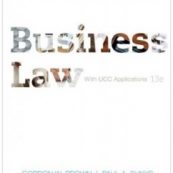

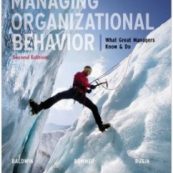

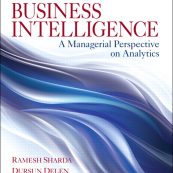

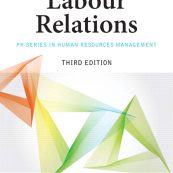
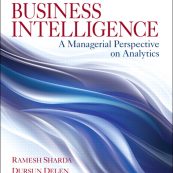
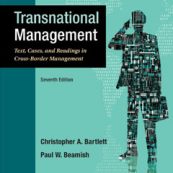

Reviews
There are no reviews yet.